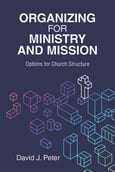Church council meetings are where important—and often difficult—decisions are made regarding church leadership and the congregation. Building a prayer culture in your church within your meetings allows God to remain the central focus. It also reminds people to submit to God’s plan and desires for the church rather than pursue their own plans and desires. Here are a few tips on how to lead prayer at your church board meetings from David J. Peter’s book, Organizing for Ministry and Mission.
It should be recognized, however, that some board members will be more familiar with and fluent in prayer than others. No one should be compelled to pray out loud. Pastors and board leaders may encourage the other participants to speak their orison out loud, but they should not require this. Many people fear public speaking, and vocalized prayer may fit this phobia. Leaders will assure participants that they may express prayers silently if they are uncomfortable doing so audibly. They should be assured that God hears their silent prayers. Here are some practical methods to integrate prayer more thoroughly into board meetings and activities.
Scheduled Prayers
Opportunities for praying are deliberately planned and scheduled in the meeting agenda. This can be approached in a number of ways.- Time for prayer is explicitly identified in the written agenda.
- This is in addition to the traditional opening and closing prayers. Opportune times are at each action item. Since the action item requires the board members to make a decision on the motion, it is salutary to invoke the Lord’s blessing on the decision and ask for His guidance. I have observed that when participants “speak to the motion” before God in prayer, they are often much godlier in speaking to the motion before one another in discussion.
- Specific types of prayer may be scheduled at appropriate points in the agenda.
- Certain types of prayer can fit in well to a meeting agenda. For example, the meeting would begin with an invocation, which places the name and character of God upon the meeting. Following the reports, a prayer of thanksgiving is spoken, which acknowledges the Lord for what He has accomplished through the board members since the previous gathering. Finally, the participants can close the meeting with a doxology, praising God for His faithfulness to them.
Formal Prayers
Another option is to employ prayers that are codified and used more formally in the church. These are written works that bear a more liturgical character. Frequently they are found in the various orders of worship used by one’s faith tradition, such as collects, litanies, and responsive prayers. There is a rich tradition of devotional and liturgical material from which these prayers may be accessed.
- Psalms
- The Psalter has been called the hymnbook and the prayer book of the Bible. They are God’s Word to us, but they are words designed to be returned to Him in prayer. The Psalms may be prayed in unison or responsively by verse, half verse, or strophe.
- The Lord’s Prayer
- This is the prayer is given to us by our Lord Jesus Christ, recorded in the Gospels. Rather than race through its words, which can be done mindlessly, I pause after each petition and allow the participants to reflect on the words and apply them to the issues at hand.
- The hymnal
- Hymnals from liturgically oriented traditions include various orders and litanies that may be prayed by the gathered lay leaders, such as the offices of Matins, Vespers, and Compline. If your faith tradition does not utilize such offices, your hymnal will provide a rich source of written prayers in many of the songs and hymns. These can be spoken or sung. The point is to use them in the practice of corporate prayer as a board or council.
Spontaneous Prayers
Although form has its place in the spiritual practice of prayer, spontaneity is also welcome. Board meetings will seem much fresher and livelier if there are moments of spontaneity. And the use of extemporaneous prayers is one way to facilitate such spiritual refreshment.
- Invitation
- As stated earlier, the leader of a meeting should facilitate prayer that permeates the meeting rather than being relegated only to the beginning and/or conclusion (bookend prayers). To achieve this, he may invite prayers to be offered by participants throughout the time spent together.
- Intervention
- There are occasions in which meetings can become tense. Board members disagree with one another and may become angry. Sin is manifest in disharmony, unhealthy conflict, and hurtful words. Or perhaps participants are simply frustrated or at an impasse in making decisions. This is a time for intervention by turning to the Lord in prayer.
Blog post adapted from Organizing for Ministry and Mission: Options for Church Structure , pp. 160–65, © 2023 David J. Peter, published by Concordia Publishing House. All rights reserved.
 Read more about structuring and guiding church leadership from Organizing for Ministry and Mission.
Read more about structuring and guiding church leadership from Organizing for Ministry and Mission.
















